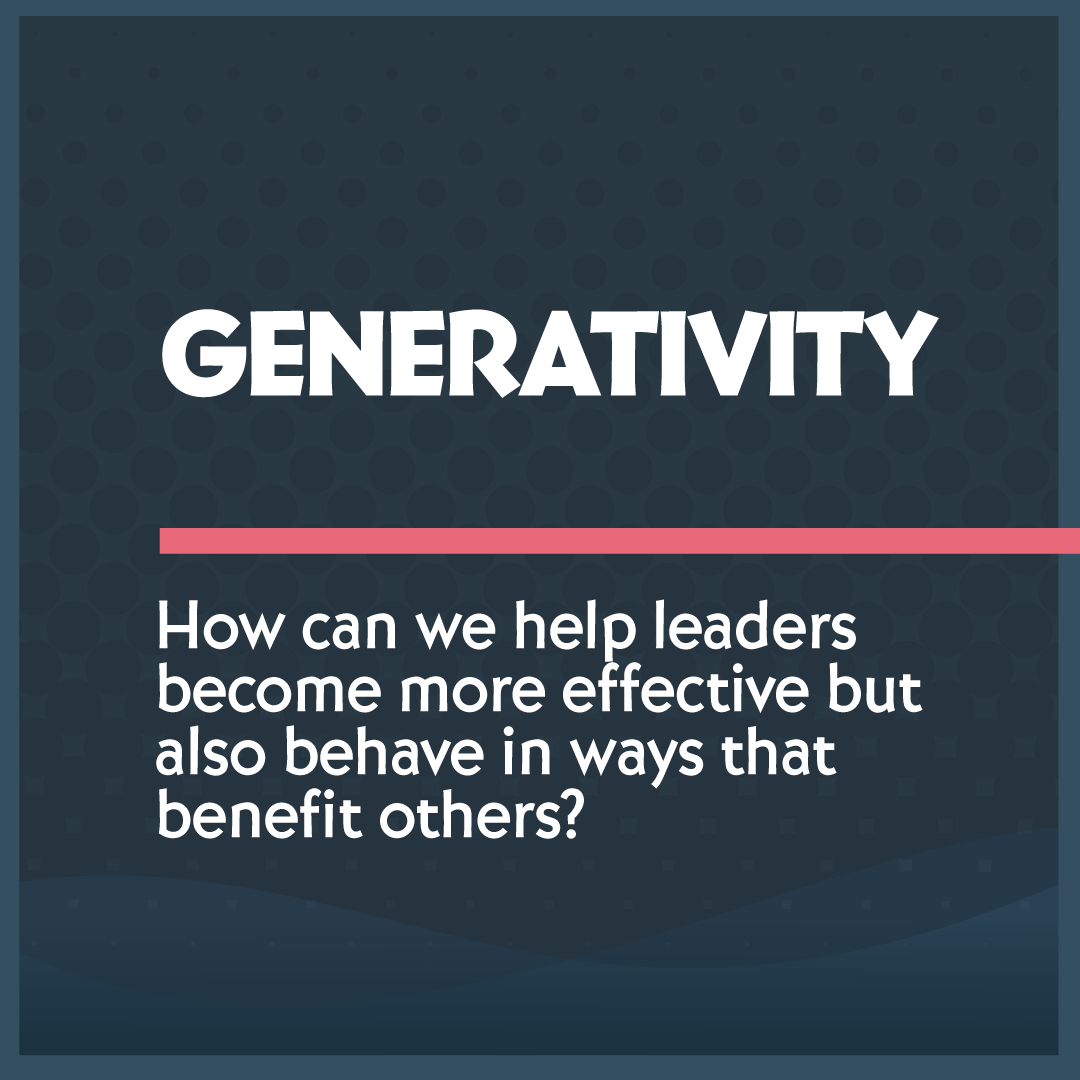
Insights from the Tilt365 Science Team
Cultivating plants can be an arduous endeavor: Certain amounts of sunlight can be great for one plant while being detrimental to another. Developing leaders is similar in the sense that the development strategies must be tailored to the unique needs of each leader.
A key aspect of Tilt 365’s mission is to not only develop leaders so that they are effective in a general sense but also to behave in ways that benefit others. This is one aspect of what we call “Generativity”, and it is valuable to everyone, not just leaders.
For example, when a person or leader is generative, they are wholly engaged in their work and functioning in a state of flow. Also, a generative leader has the ability to efficiently “turn the ship” and influence others’ behaviors so that productivity remains high and team cohesion is preserved.
 One obstacle to generativity is unconscious personality patterns that are rooted in fear, and these surface especially when individuals fail to self-regulate and fall into counterproductive interactions that arise from ego fears. Generativity necessitates self-forgetting (a.k.a., transcending self-interests in favor of the purpose or mission of the team).
One obstacle to generativity is unconscious personality patterns that are rooted in fear, and these surface especially when individuals fail to self-regulate and fall into counterproductive interactions that arise from ego fears. Generativity necessitates self-forgetting (a.k.a., transcending self-interests in favor of the purpose or mission of the team).
Therefore, generativity is an outcome of flow that we all have the potential to experience, but it’s important to invest time and practice working with one another in service to the mission. Doing so repeatedly improves the chances that generativity will result from a team effort.
People embodying generativity are capable of identifying what triggers them to overuse or underuse a character strength in an unhealthy manner and then subsequently work towards balancing the four meta-strengths of the Tilt Framework (i.e., Humanity, Wisdom, Courage, and Resilience).
This, in turn, minimizes ego drama in a given team and accelerates the process of achieving what we call “Developed Generativity”. Well-being is improved when a state of cohesion is reached, and ego fears are absent.
In order to understand how to maximize one's benefit to others, it’s crucial to understand the unique needs and desires of those other individuals. The suite of Tilt365 strength assessments can shed light on these matters (and a host of others).
Our generativity post later this week will feature many more details on the Generativity concept.
Relevant Quotes
“Generative Coaching supports clients in consciously choosing to step into life in new ways. Living in the state of being that is Generative Wholeness™, clients consistently choose change that sustains connection to effortless vitality.”
“In terms of practical implications, our findings show that generativity is associated with many desirable work outcomes, including work motivation, affective organizational commitment, and work relationships (i.e., mentoring). Thus, practitioners may be well advised to implement human resource (HR) strategies that provide an opportunity for employees to enact their generativity motive.”
— Friederike Doerwald, Hannes Zacher, Nico W. Van Yperen, and Susanne Scheibe
People Also Ask
1.) Who coined the term “Generativity”?
Erik Erikson
2.) How does generativity happen?
When a person is so engaged in problem-solving or creating output, they are said to “lose themselves in the moment”. What we are losing in moments like this is self-consciousness. As a result, we throw ourselves into a challenge with our whole self and forget our ego parts. Generativity is the result of a flow experience, and it can be thought of as exponential productivity and creativity.
3.) How can I become generative?
While there are numerous strategies, some of the most useful are self-reflection, knowledge and application of the Tilt Framework, and achieving balance in the twelve Tilt 365 character strengths.



